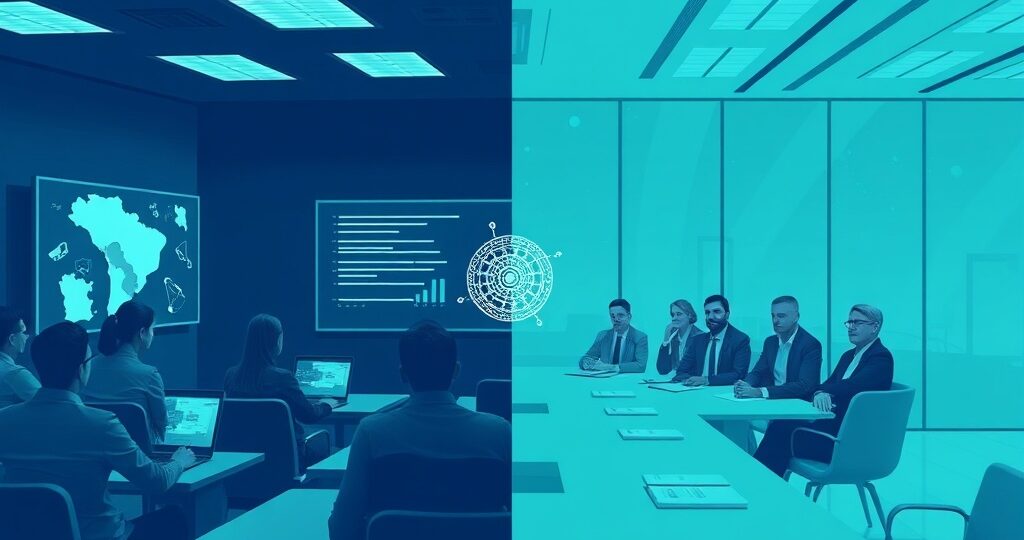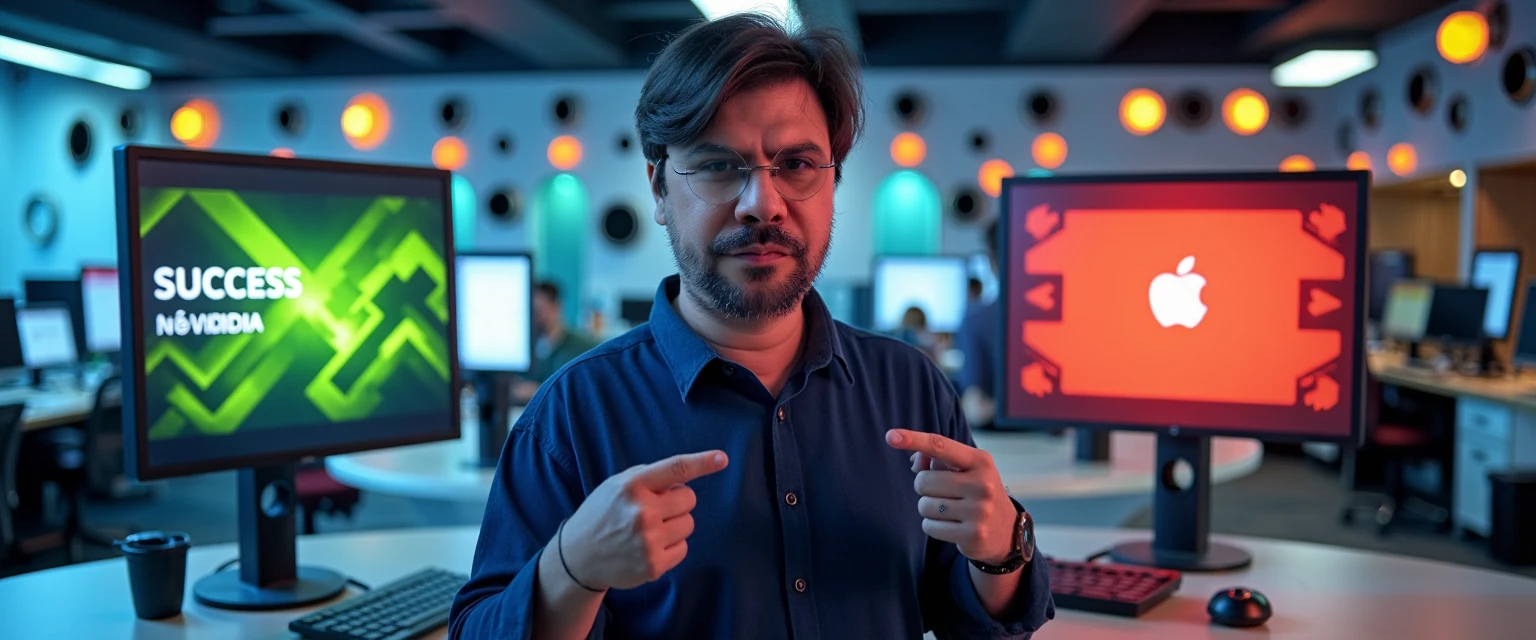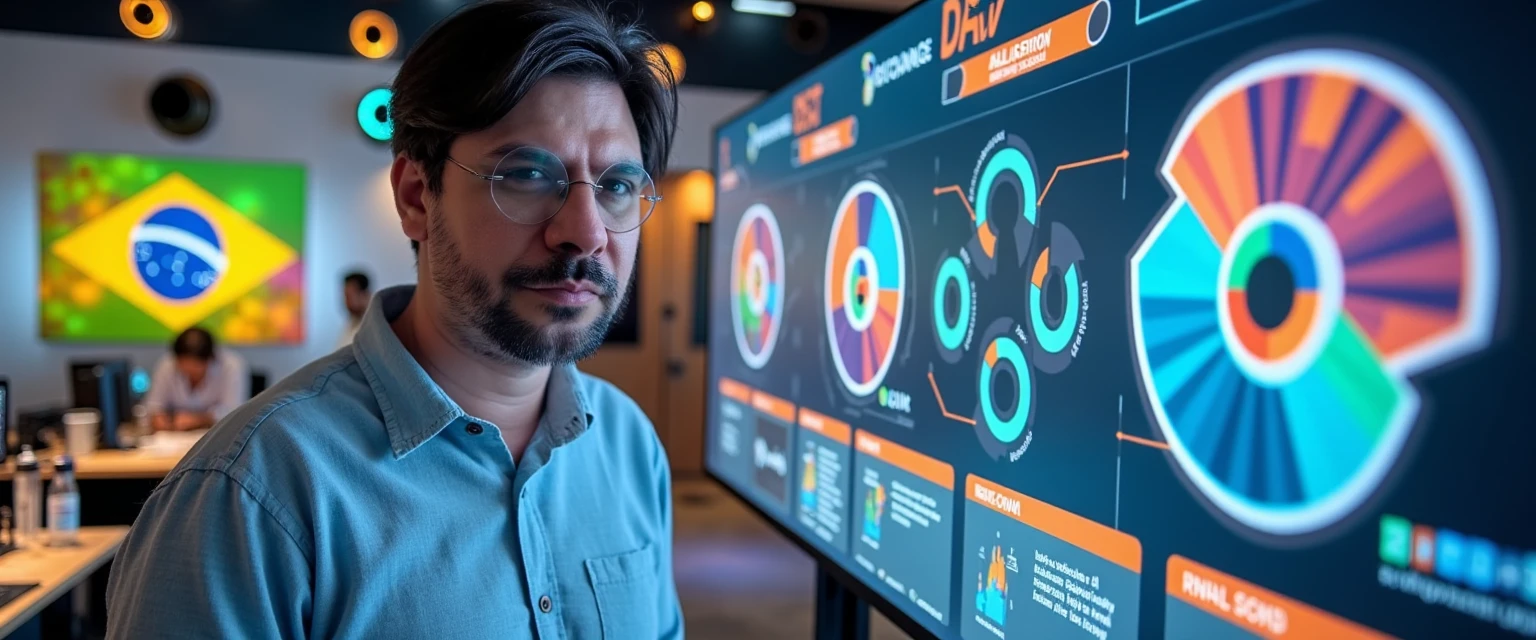Brazilian Teachers Lead the World in AI Use While Deloitte Loses R$ 1.5 Million to Failures - Why This Contrast Defines the Most Critical Moment in Digital Maturity
October 8, 2025 | by Matos AI

Imagine discovering that Brazil leads the world in the adoption of artificial intelligence in education, with 56% of teachers using AI - 20 percentage points above the average for developed countries - at the very moment when one of the world's largest consulting firms needs to return R$ 1.5 million to the Australian government for failures caused by AI “hallucinations”.
This contrast is no coincidence. It is the most accurate portrayal of the moment we are living in: a maturing phase where enthusiasm for technology meets the reality of its limitations.
Brazil in Silent Leadership
While we discuss regulations and public policies, something extraordinary is happening in Brazilian classrooms. Our teachers didn't wait for government authorization to embrace AI. According to the OECD with 280,000 educators, Brazil ranks 10th in the world in the educational use of AI, surpassing countries with a consolidated educational tradition.
Join my WhatsApp groups! Daily updates with the most relevant news in the AI world and a vibrant community!
- AI for Business: focused on business and strategy.
- AI Builders: with a more technical and hands-on approach.
The numbers are impressive:
- 77% use AI to create lesson plans
- 64% to automatically adjust the difficulty of materials
- 63% to learn and summarize topics efficiently
- 54% to support students with special needs
This happens organically, without official guidelines. A practical demonstration that real innovation is born of necessity, not decrees.
The Dark Side of the AI Race
But it's not all flowers in this digital garden. The Deloitte case exposes an uncomfortable reality: Even consulting giants are making elementary mistakes with AI. The official report featured more than a dozen false references, invented quotes and even misspellings of judges“ names - all the product of GPT-4o's ”hallucinations".
Dr. Christopher Rudge, from the University of Sydney, got straight to the point: “The credibility of the work has been compromised due to the flaws in the methodology.” When a company of Deloitte's caliber fails to properly oversee the use of AI, it tells us a lot about where we are on this journey.
And the phenomenon has a name: “workslop”. A survey by Harvard Business Review revealed that 40% of American professionals received botched AI jobs in the last month, costing approximately US$ 9 million annually for a company of 10,000 employees.
The Trillionaire Bubble and Its Paradoxes
Jeff Bezos isn't afraid to call a spade a spade. “AI is living in a bubble”, said the founder of Amazon. But his perspective is different: he classifies it as an “industrial bubble”, comparable to the biotechnology of the 1990s which, despite financial losses, resulted in life-saving medicines.
The numbers are dizzying. A consulting firm Bain & Co. estimates that by 2030, AI companies will need US$ 2 trillion in annual revenue to support the projected demand for computing, but predicts a shortfall of US$ 800 billion.
OpenAI's Stargate project, announced at the White House with US$ 500 billion in investments, perfectly symbolizes this moment: trillion-dollar ambition meeting the reality of still uncertain returns.
The New Emerging Risks
While we debate financial bubbles, criminals have already figured out how to monetize AI in a perverse way. Dumb calls are being used to pick up voices and create criminal deepfakes. The São Paulo Civil Police warns: a few seconds of recording is all it takes to convincingly clone a voice.
Anderson Leite, from Kaspersky, is categorical: “With just a few seconds of recording, it's possible to generate a convincing copy of the voice.” We are creating powerful tools faster than we can establish safeguards.
The Moment of Digital Maturity
This set of events reveals something fundamental: we are living through the most critical moment of the AI journey. No longer the blind enthusiasm of the early days of ChatGPT, nor the paralyzing skepticism of those resistant to change.
It's the moment of digital maturity. A time when we recognize both the transformative potential and the real limitations of technology.
The example of Brazilian teachers is inspiring precisely because it shows practical and conscious use. They are using AI to solve real problems: preparing better lessons, personalizing content, supporting students with special needs. Not to replace teaching, but to enhance it.
Lessons for Leaders and Organizations
Ryan Zhang, a productivity expert, gets the diagnosis right: “The problem is not the technology itself, but how it is used.” Applied to specific tasks and with clear objectives, AI improves efficiency.
The organizations that will survive this phase of maturation are those that:
- They invest in real training for their teams
- Establish supervision and validation processes
- Focus on specific use cases before expanding
- Maintain a critical perspective on the limitations of technology
Jamie Aitken, from Betterworks, sums it up well: “It's up to leaders to set clear expectations for the use of AI.” Without this conscious leadership, we run the risk of accelerating mediocrity instead of excellence.
The Brazilian Way
While other countries are debating regulation, Brazil is discovering this in practice how to balance innovation and responsibility. The National Education Council's initiative to make the teaching of AI compulsory in Pedagogy and Degree courses is a strategic move.
As Celso Niskier points out: “We don't just want to teach about AI. We want teachers to know how to use AI so that their students can learn all the other subjects.”
This is a much more mature approach than simply banning or releasing without criteria. It's recognizing that technology is a tool, and like any tool, its value depends on who wields it and how they use it.
Where we're going
Will the AI bubble burst? Probably yes, at least in its speculative financial dimension. But the real applications, those that solve concrete problems like our teachers do, will remain and grow stronger.
The current moment demands a paradoxical stance from us: optimism informed by realism. Enthusiasm for the possibilities, tempered by an awareness of limitations.
In my work with companies and executives, I see that those who manage to navigate this paradox are the ones who emerge stronger. It's not those who ignore the risks, nor those who are paralyzed by them. They are the ones who recognize them and build systems to mitigate them.
Brazil has a unique opportunity right now. We are not the first to arrive at the AI party, but we have arrived at the right time: when the technology is mature enough to generate real value, but still flexible enough to be shaped by our creativity and specific needs.
The question is no longer whether to use AI, but how to use it wisely. And on this journey of digital maturity, Brazil can lead by example, as our teachers are already doing.
In my executive mentoring, I help leaders and organizations navigate exactly this moment: how to harness the potential of AI while building the governance and oversight systems needed to avoid the “workslops” that are costing the global market millions.
✨Did you like it? You can sign up to receive 10K Digital's newsletters in your email, curated by me, with the best content about AI and business.
➡️ Join the 10K Community here
RELATED POSTS
View all



